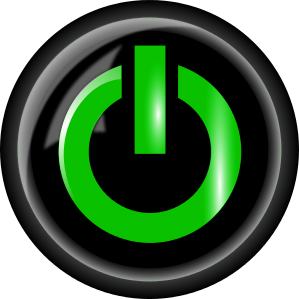
Energy Terminology
The energy industry uses a lot of terms, phrases, and abbreviations. You’ve probably seen a few of them on your energy bill. We hope this convenient glossary provides some clarity as you try to find the best energy plan for your home or business.
AGGREGATION - A practice that allows marketers and local governments to pool the electric or natural gas consumption of multiple customers, or residents as in the case of local governments, in order to purchase the electricity or natural gas at a bulk rate.
BALANCE FORWARD - The remaining amount that was not paid on the previous bill and was carried over to the current bill. This may include an unpaid balance, returned check charges, late payment fees or other adjustments. If your previous bill has been paid in full, your balance forward will be zero dollars.
BUDGET BILLING - Program offered by regulated electric companies that spreads out the cost of energy used during high-demand times of the year.
BULK POWER SYSTEM - The electrical generation resources, transmission lines, and interconnections with neighboring systems, and associated equipment, generally operated at voltages of 100 kilovolts (kv) or above.
CAPACITY - The capability to generate electrical power, usually measured in megawatts (MW) or kilowatts(kW).
CARRIER - The carrier owns the pipes and wires through which the energy flows. They still need to acquire energy from an outside source before they deliver it to a home or business. Once you sign up for a plan with your new alternative energy supplier, they will connect with your local utility “carrier” who delivers the energy to your home or business.
DEMAND - The rate at which energy is being used (measured in kW). Measuring demand allows local utility companies to anticipate and plan for the maximum electrical needs of all users in the area. This ensures that facilities are properly sized to handle customer energy needs and that individual customers are charged fairly based on energy capacity requirements.
DEMAND-SIDE MANAGEMENT - The use of processes and equipment to reduce the use of electricity or to shift use away from periods of high electrical demand.
DISPLACEMENT POWER FACTOR - Displacement Power Factor is the power factor measuring only the 60 Hz angular displacement between the current and the voltage. Power factor correction capacitors can reduce this angular displacement. This measurement can be misleading if harmonics are present.
DISTRIBUTION CUSTOMER CHARGE - Independent of your electricity consumption. This charge typically covers the fixed costs associated with rendering electrical services, such as billing and customer service. Your electric utility provides working (kW) and reactive power (kVAR) to your plant in the form of apparent power (kVA). While reactive power (kVAR) doesn’t register on kW demand or kW hour meters, the utility’s transmission and distribution system must be large enough to provide the total power. Utilities have various ways of passing the expense of larger generators, transformers, cables, switches, and the like, along to you. Power Factor Correction capacitors can save you money no matter how your utility bills you for power. The utility measures and bills every ampere of current, including reactive current.
DISTRIBUTION SYSTEM - The poles, wires, and transformers used to deliver electric energy from a bulk power supplier to the consumer.
DISTURBANCE - An unplanned event that produces an abnormal system condition on the EPS, a power supply unit, as in the sudden failure of generation or interruption of the load.
ELECTRIC CURRENT - The flow of electrons through a wire or other conductor.
ELECTRICITY - The most common energy source that powers most of the things we use on a daily basis—including lights, heat and air conditioning, computers and TV’s, most major appliances and anything else that plugs into an energy outlet.
ENERGY - The actual quantity of electricity used during the billing period, measured in KWh.
ENERGY POLICY ACT OF 2005 (EPAct 2005) - A federal law signed in 2005, the act was intended to establish a comprehensive, long-range energy policy. It provides incentives for traditional energy production as well as newer, more efficient energy technologies, and conservation.
FEDERAL ENERGY REGULATORY COMMISSION (FERC) - An agency of the federal government responsible for regulation of electric utility installations and wholesale services used in interstate commerce.
FOSSIL FUEL - Materials such as coal, oil, or natural gas that were formed in the ground millions of years ago from plant and animal remains and are now used to produce heat or power; also called conventional fuels.
GENERATOR - A device that converts mechanical energy into electrical energy.
GRID - An interconnected system of electric cables and power stations that distributes electricity over a large area.
I2R LOSS - When a circuit supplies current to a load, it experiences a drop in voltage and a dissipation of energy in the form of heat. In dc circuits, voltage drop is equal to current in amperes multiplied by the resistance of the conductors, V = IR. In ac circuits, voltage drop is a function of load current and power factor and the resistance and reactance of the conductors. Heating is caused by conductor losses; for both dc and ac circuits they are computed as the square of current multiplied by conductor resistance in ohms. Potential savings in billed kW-Hrs can be realized depending upon where (PowerLink Units) PFCCs are located in an electrical system. When PFCCs are energized, total power is reduced from their location in the system back to the utility source. In other words, PFCCs reduce the electrical current flowing from the utility provider's generator to the capacitor location. This reduction in current can be as high as 20%. Power loss results from current passing through a conductor and is expressed by the following formula:
Power Loss = Current2 x Resistance = I2R
Power loss is measured in watts, current is measured in amperes and resistance is measured in ohms. Considering the formula above it becomes obvious that locating the PFCC at the extremities of the feeders and branch circuits (where the loads are) can result in a reduction in power loss of approximately 30% for a typical facility. Note, this is a reduction in power loss and not in total power consumption.
ICC – ILLINOIS COMMERCE COMMISSION - Balances the interests of consumers and utilities to ensure adequate, efficient, reliable, safe and least-cost public utility services.
HARMONICS - Ideally, voltage and current waveforms are perfect sinusoids. However, because of the increased popularity of electronic and other non-linear loads, these waveforms quite often become distorted. This deviation from a perfect sine wave can be represented by harmonics-sinusoidal components having a frequency that is an integral multiple of the fundamental frequency. Thus, a pure voltage or current sine wave has no distortion and no harmonics, and a non-sinusoidal wave has distortion and harmonics. To quantify the distortion, the term total harmonic distortion (THD) is used. The term expresses the distortion as a percentage of the fundamental (pure sine) of voltage and current waveforms.
KILOVOLT (kv) - 1,000 volts. The amount of electric force carried through a high voltage transmission is measured in kilovolts.
KILOWATT (kW) - The amount of electricity being used is measured in Kilowatts.
KILOWATT HOUR (kWh) - Energy companies measure how many kilowatts are used each hour. This is called a Kilowatt hour. A 100 Watt light bulb takes 1 kwh or 1,000 watts to keep the light on for 10 hours. A modern day refrigerator typically uses between 350–600 kwh per year, depending on the size and the efficiency of the particular model.
LINE - A carrier of electricity on an electric power system.
LOAD - The amount of electric power drawn at a specific time from an electric power system, or the total power drawn from the system.
LOAD FACTOR - The ratio of average demand to peak demand; a measure of efficiency that indicates whether a system’s electric use over a period of time is reasonably stable, or if it has extreme peaks and valleys.
LOCAL UTILITY - Local utilities are responsible for distributing power from transmission lines to people’s homes. Your local utility is available to answer questions you have about your bill, power interruptions and energy use.
MARKET RATE OPTION (MRO) - Senate Bill 221 allowed electric companies the option to submit a plan to the PUCO for approval to move to a market-based rate structure for electric generation.
MARKET-BASED PRICING - The basing of a longer-term contract or rate schedule on published current market pricing of competing supplies of natural gas or alternative fuels. Also known as market-responsive pricing.
MEGAWATT (MW) - A unit of energy equal to 1,000 kilowatts or 1 million watts.
MEGAWATTHOUR (MWH) - A unit of energy of work equal to 1,000 kilowatt hours or 1 million watthours.
METER - A device used to measure, display, and record the amount of power flow in kW and/or kWh, and/or energy in kWh, at a point on the electric power system.
METER NUMBER - A serial number assigned for both gas and electric service. Each customer has a unique meter number to track their exact energy usage for their home or business. Meter numbers are located on your bill or the meter.
NET METERING - A system that connects solar panels or other renewable energy generators to a public-utility power grid and surplus power is transferred onto the grid. The generators are located on the customer's premises and is intended primarily to offset the customer's own electrical requirements allowing customers to offset the cost of power drawn from the utility.
NORTH AMERICAN ELECTRIC RELIABILITY COUNCIL (NERC) - An independent organization that works to ensure that the bulk electric system in North America is reliable, adequate and secure.
OFF-PEAK - A period of low system demand on the electric power system.
OUTAGE - A temporary suspension or interruption of operation, especially of electric power, occurring when a power plant, transmission or distribution line, or other facility on the electric power system is not operating.
PEAK LOAD - The amount of power drawn from an electric power system at the time of highest demand, measured in kilowatts or megawatts.
PEAKING - The condition where a generating unit is operating to provide the maximum power it is capable of producing. A generating unit that is capable of the efficient production of peaking power is characterized as a “peaking unit.”
POWER FACTOR (PF) - The ratio of the actual electrical power dissipated by an AC circuit to the product of the r.m.s. values of current and voltage. The difference between the two is caused by reactance in the circuit and represents power that does no useful work. See "What_Is_Power_Factor_with_Beer.pdf".
POWER FACTOR CORRECTION (PowerLink E-Box) - Power factor correction is achieved by the addition of capacitors in parallel with the connected motor or lighting circuits and can be applied at the equipment, distribution board or at the origin of the installation. Power Factor Correction must be sized by a Trained Professional using patented method & apparatus and installed with the correct placement to avoid the disadvantages that can occur when correction is not properly sized and engineered resulting in under or over correction. See "Power Link" page. Also see "Power Factor Correction" page.
POWER FACTOR PENALTIES (Demand Charge Penalties)(Tariffs) - PF is a dimensionless number, often expressed as a percentage, that reflects the relationship between kilowatts (kW) and kilovolt-amperes (kVA). A PF of one (sometimes referred to as unity) reflects a perfect PF where kW and kVA are equal. Customers pay a significant premium each month in demand charges because their PF is below a threshold set by the utility in the rate tariff. Oftentimes it is not obvious to the untrained eye when there are extra charges associated with a bad PF on the customer bill. See "Power Factor Correction" page.
PRICE TO COMPARE - The difference in cost of using an alternative supplier versus the cost of having power supplied by the local utility that is also delivering the energy. This provides a simple method for comparing the two prices and determining the savings amounts. The price to compare can vary from month to month based on market price fluctuations.
PRODUCER - Term used to describe the regulated utility that produces your energy. They are responsible for generating your power, which is electricity or natural gas.
RATE CODE - Specific charges for each type of energy (gas and electric) are calculated using rate codes. These codes are determined by multiple factors including: mandated tariffs on files with local regulatory agencies, residential or business usage, the type and size of the facility using the power, typical power demands at the address, the time of day of typical peak usage, the number of meters at the address, special discounts for certain types of people or groups and many other factors.
RENEWABLE ENERGY CERTIFICATES (REC) - A certificate that is proof that one megawatt-hour (MWh) of electricity was generated from a renewable energy resource. Homefield Energy purchases and retires RECs based on customer’s usage for those selecting renewable energy option.
RIDERS - Typically requested by energy companies to recover costs for specific investments or capital improvements. The rider charges for each project will no longer appear on the bill once the approved amounts have been collected.
SOLAR POWER - Energy from the sun’s radiance converted into heat or electricity.
STANDARD SERVICE OFFER - The electric generation or natural gas service a customer will receive from their local distribution utility if they do not choose a supplier. Sometimes referred to as default service.
SUPPLIER / ENERGY SUPPLIER - The Supplier buys energy from the producer and competes for your business. The supplier prepares offers with different price and contract options.
SURGE - A sudden, transient increase in the flow of electricity.
TRANSMISSION - The transfer of electric current—usually in massive or bulk quantities of power, from a power plant on an electric power system to a destination that could be hundreds of miles away. Power flow can be in either direction.
TRUE POWER FACTOR - True Power Factor is properly defined as the real power divided by the apparent power. This measurement includes all frequencies, not just the 60 Hz. The challenge is to measure the true RMS VA with all the harmonics. (RMS, root mean square is a mathematical term for measuring voltage or current properly.) Capacitors cannot correct poor power factor due to harmonics except as a component of a LC filter.
WATT - A measurement that describes how much electricity is used per second. Kilo means a thousand so one kilowatt = 1,000 watts.
Our Library
 Power Factor Savings Made Simple - Video A simple explanation of Power Factor savings from Power Factor Correction provided by Power Efficiency Systems.
Power Factor Savings Made Simple - Video A simple explanation of Power Factor savings from Power Factor Correction provided by Power Efficiency Systems. Power factor correction: a guide for the plant engineer Technical Data SA02607001E What is power factor? Should I be concerned about low power factor? What can I do to improve power factor? How much can I save by installing power capacitors?
Power factor correction: a guide for the plant engineer Technical Data SA02607001E What is power factor? Should I be concerned about low power factor? What can I do to improve power factor? How much can I save by installing power capacitors?
 What Is Power Factor with Beer? Power Factor is the percentage of apparent power that does real work. Understand Power Factor using Beer Mug Analogy.
What Is Power Factor with Beer? Power Factor is the percentage of apparent power that does real work. Understand Power Factor using Beer Mug Analogy. Difference between Real, Reactive and Apparent Power A simple tutorial on the differences between real, reactive & apparent power for UPS systems in data centers using the Beer Analogy
Difference between Real, Reactive and Apparent Power A simple tutorial on the differences between real, reactive & apparent power for UPS systems in data centers using the Beer Analogy Power Factor Explained What is Power Factor Correction? Explaination presentation from our friends in Australia.
Power Factor Explained What is Power Factor Correction? Explaination presentation from our friends in Australia.
 Power Factor Correction (pfc) By John Ware - Power factor explained. Power factor correction. Why improve power factor? How to improve power factor.
Power Factor Correction (pfc) By John Ware - Power factor explained. Power factor correction. Why improve power factor? How to improve power factor.
 POWERLINK E-BOX SYSTEMS SAVE MONEY ON YOUR ELECTRIC BILL!
White Paper on Power Factor Correction. "Over 16 Billion Dollars of Electricity is unusable energy, but billable in the U.S." - US Department of Energy
.
POWERLINK E-BOX SYSTEMS SAVE MONEY ON YOUR ELECTRIC BILL!
White Paper on Power Factor Correction. "Over 16 Billion Dollars of Electricity is unusable energy, but billable in the U.S." - US Department of Energy
.
 PowerLink Brochure Strategic Power Solutions and PowerLink E-boxes can help save you save as much as 25% on your electric bill.
PowerLink Brochure Strategic Power Solutions and PowerLink E-boxes can help save you save as much as 25% on your electric bill.
 A Few Of Our Satisfied Clients Locally & Globally REDUCING POWER FACTOR COST - This fact sheet describes power factor and explains how you can improve your power factor to reduce electric bills and enhance your electrical system’s capacity.
A Few Of Our Satisfied Clients Locally & Globally REDUCING POWER FACTOR COST - This fact sheet describes power factor and explains how you can improve your power factor to reduce electric bills and enhance your electrical system’s capacity.
 U. S. Department of Energy - FACT SHEET A simple list of a few we have helped in the U.S.A and the world over.
U. S. Department of Energy - FACT SHEET A simple list of a few we have helped in the U.S.A and the world over.
 Pacific Gas and Electric Company - Economics of Power Factor Correction in Large Facilities The example calculation below is for a PG&E customer to increase power factor from 70% to 90%. Values given are average for a year, not monthly or season specific.
Pacific Gas and Electric Company - Economics of Power Factor Correction in Large Facilities The example calculation below is for a PG&E customer to increase power factor from 70% to 90%. Values given are average for a year, not monthly or season specific.
 SPS Testimonials & Case Studies This testimonial & case sheet shows how Power Efficiency Systems has reduced electric bills, provided smart solutions and enhance electrical system capacity.
SPS Testimonials & Case Studies This testimonial & case sheet shows how Power Efficiency Systems has reduced electric bills, provided smart solutions and enhance electrical system capacity.
 Power Factor Improvement State Energy Assessment Workshop Power Point By: DTE Energy Partnership & Services / Detroit Edison.
Power Factor Improvement State Energy Assessment Workshop Power Point By: DTE Energy Partnership & Services / Detroit Edison.Also DTE Energy has has cost and return on investment examples of How Does Power Factor Affect Electric Bills? on thier website.
 Case Study - Crawfordsville Eagles
Real-time Power Factor Correction case study showing actual dollar savings with power usage increase.
Case Study - Crawfordsville Eagles
Real-time Power Factor Correction case study showing actual dollar savings with power usage increase.
 Schneider Electric S.A. - Electrical Installation Guide
According to IEC international standards The Electrical Installation Guide is a single document covering the techniques and standards related to low-voltage electrical installations. It is intended for electrical professionals in companies, design offices, inspection organisations, etc.
Schneider Electric S.A. - Electrical Installation Guide
According to IEC international standards The Electrical Installation Guide is a single document covering the techniques and standards related to low-voltage electrical installations. It is intended for electrical professionals in companies, design offices, inspection organisations, etc.
 AT LOAD POWER FACTOR CORRECTION
The New York State Energy Research and Development Authority (NYSERDA) is a public beneft
corporation created in 1975 by the New York State Legislature.
AT LOAD POWER FACTOR CORRECTION
The New York State Energy Research and Development Authority (NYSERDA) is a public beneft
corporation created in 1975 by the New York State Legislature.
 Understanding Electric Consumption
& Demand Charges
So, it’s a good idea to understand how electric consumption & demand charges plus penalties are calculated.
Understanding Electric Consumption
& Demand Charges
So, it’s a good idea to understand how electric consumption & demand charges plus penalties are calculated.
 LG&E - WATT FINDERS GUIDE
ENERGY USE AND HOW IT AFFECTS YOUR BILL. HOW IS ENERGY MEASURED? FACTORS THAT AFFECT YOUR BILL. How to Figure the Cost of Operation
LG&E - WATT FINDERS GUIDE
ENERGY USE AND HOW IT AFFECTS YOUR BILL. HOW IS ENERGY MEASURED? FACTORS THAT AFFECT YOUR BILL. How to Figure the Cost of Operation
 NSW Farm Energy Innovation Program © NSW Farmers Association 2013 - ENERGY IN SHEDS - Power factor correction Some farmers are unaware that their electricity bills can be reduced by improving the ‘power factor’ (PF) of their facilities.
NSW Farm Energy Innovation Program © NSW Farmers Association 2013 - ENERGY IN SHEDS - Power factor correction Some farmers are unaware that their electricity bills can be reduced by improving the ‘power factor’ (PF) of their facilities. 
Can You Benefit From
Power Factor Correction?
The answer is "YES!" in many ways.
- LOWER ELECTRICITY BILLS: PF correction is an actionable way to lower your utility bills. Savings can range from hundreds to tens of thousands of dollars per year, depending on the size of your facility.
- AVOID UTILITY REACTIVE POWER FEES: Utility companies routinely charge reactive power fees to consumers with low power factors (less than 96%-95%). For example, this can result in your bills increasing by up to 20%, depending on which company is supplying your electricity.
- REDUCE CARBON EMISSIONS: By utilizing power factor correction, you can also lower the amount of carbon emissions released into the atmosphere. This can be another large source of savings.
- REDUCE I2R LOSSES in transformers and electrical distribution equipment.
- ACHIEVE HEAT REDUCTION in cables, switchgear, transformers and alternators, which in turn prolongs their lifespans.
- REDUCE VOLTAGE DROP in cables, allowing the same cable to supply a larger motor and improve the starting of motors located at the end of long cable runs. This also helps to avoid motor failure and damage to your equipment.
Testimonials
Our estimated power savings on average is 20%, and our monthly cost savings ranges between $2,000 and $4,000.
Justin H. Matthews - Imagine School at North Port




